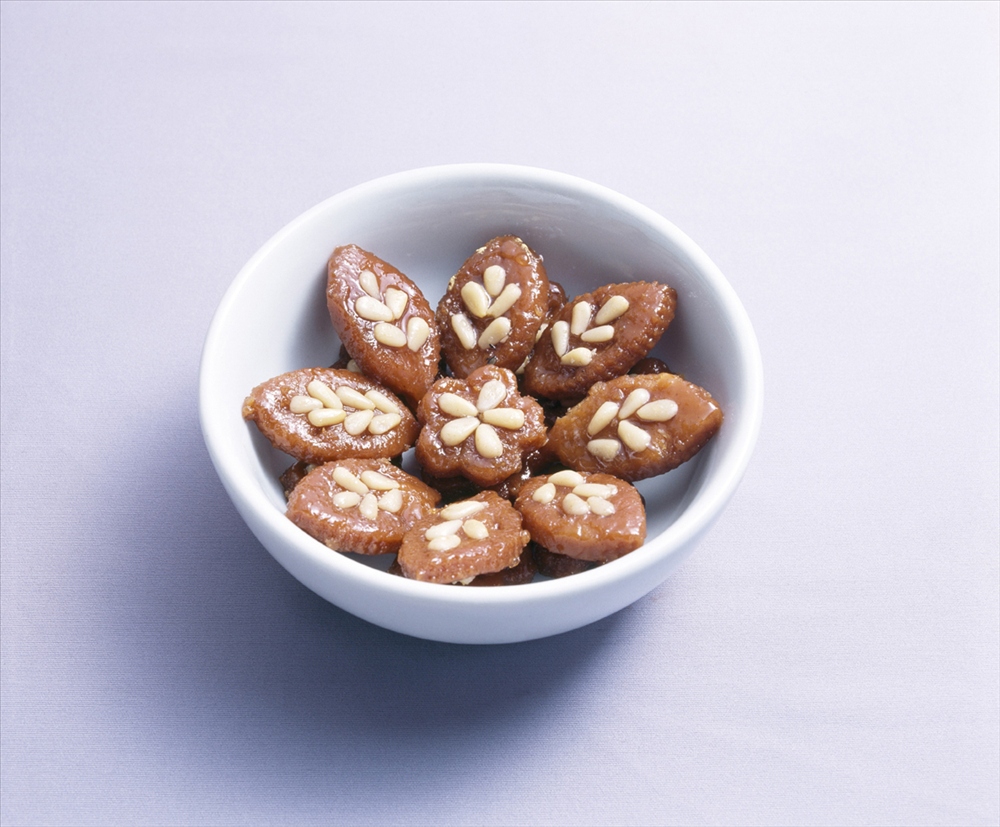Dessert, Sweet
Songpyeon
Songpyeon is a traditional Korean food made of rice powder. Its shape resembles a half moon and it is a representative rice cake of Korean holidays and traditional culture. It is a type of tteok, small rice cakes, and variety of fillings are used—some include red bean paste, toasted sesame seeds, and chestnuts. Songpyeon is traditionally eaten during the Korean autumn harvest festival, Chuseok, where it is often prepared by families at home. It is a popular symbol of traditional Korean culture. The earliest records of songpyeon date from the Goryeo period.
Songpyeons are half-moon shaped rice cakes that typically contain sweet or semi-sweet fillings, such as soybeans, cowpeas, chestnuts, jujubes, dates, red beans, sesame seeds, or honey. They are steamed over a layer of pine needles, which gives them a distinctive taste and the fragrant smell of fresh pine trees. The colors typically include white (흰 송편, hwinsongpyeon), green (숙 송편, ssuksongpyeon), red (송이 송편, songgisongpyeon), and yellow (치자 송편, chijasongpyeon). Songpyeon is typically enjoyed during the Korean holiday, Chuseok, where it is shared amongst family, friends, and neighbors. It is also enjoyed with liquor on this special occasion. "Song" refers to pine needles.





